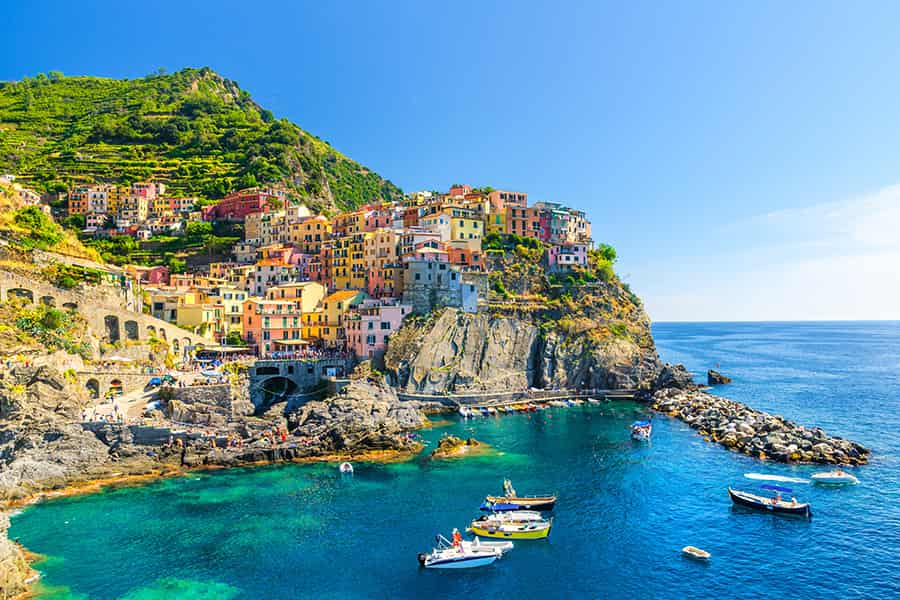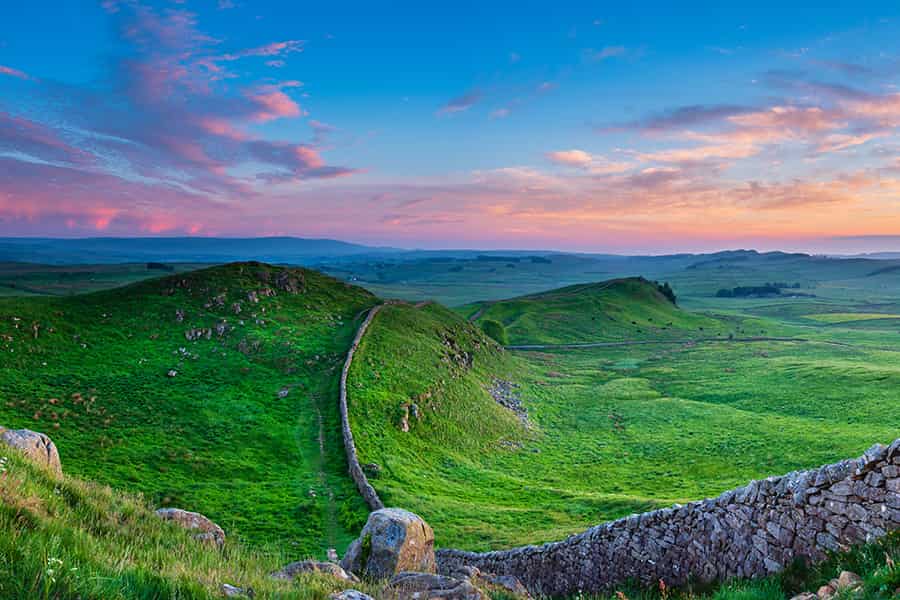Walking and hiking holidays offer an invaluable opportunity to step away from the hustle and bustle of daily life and take things at a slower pace. Plus, there’s usually a trail to suit every fitness level and ability.
There are plenty of wonders in our world that deserve to be savoured – and exploring them on foot is the ideal way to immerse yourself in and appreciate your surroundings fully.
You can also choose to walk or hike alone – which is fantastic for personal reflection – or in a group, giving you an incredible bonding experience.
So once you’ve decided to go on a walking or trekking adventure, the next question is, where would you like to go?
We’ve pulled together a list of some of the best walking and hiking experiences from around the world to give you some ideas.
1. Inca trail, Peru

The Inca Trail is a 26-mile hiking route in Peru that starts in the town of Ollantaytambo and ends at the enchanting Lost Incan city of Machu Picchu, which is built high in the Andes mountains.
The trail — which takes approximately four days to complete and leads to a charming kingdom in the clouds — is surrounded by stunning scenery including sub-tropical jungle, rich cloud forest, and Incan ruins.
The trek usually takes four days to complete and is considered a moderate to challenging hike, with steep ascents and descents, high altitude, and rugged terrain. Along the way, hikers will pass through several important Inca ruins, including the fascinating Wiñay Wayna and Intipata, before finally arriving at Machu Picchu, the legendary ‘Lost City of the Incas.’
Because of its popularity, the Peruvian government has put regulations in place to protect the Inca trail’s delicate ecosystem and cultural heritage. Therefore, a limited number of hiking permits are available each day, and it’s important to book well in advance (usually at least a few months before) to secure a spot. Hikers must also travel with a licensed guide.
Have a Peruvian adventure like no other
2. Meteora, Greece

Meteora is a unique rock formation located in central Greece, near the town of Kalambaka. The word Meteora means ‘suspended in the air’ in Greek, which is fitting, as the formation is a series of towering rock pillars that seem to defy gravity.
The rocks of Meteora were formed millions of years ago by the forces of nature – and over time, wind and rain eroded the softer rock, leaving behind the harder, vertical pillars.
In the 14th century, Orthodox Christian monks began to settle in the area, seeking solitude and a place to practice their religion. They built churches and monasteries atop the pillars, using ropes, pulleys, and ladders to transport materials and people up and down the sheer cliffs.
Today, Meteora is a UNESCO World Heritage Site, and visitors can climb up to the monasteries using stairs or ramps, and the views from the top are truly incredible, offering vistas of the surrounding mountains and valleys.
Meteora also offers a variety of hiking trails and outdoor activities, including rock climbing and mountain biking. Plus, the area is also home to a rich variety of flora and fauna, with over 170 species of birds, as well as wildflowers and herbs.
3. Simien Mountains National Park, Ethiopia

If you’re looking for culture, jaw-dropping scenery, and plenty of wildlife, then the Simien Mountains National Park in northern Ethiopia is the place to visit. The park was established in 1969 to protect the area’s rich biodiversity and is now a UNESCO World Heritage Site.
This mountain range is part of the Ethiopian Highlands and is characterised by jagged peaks, deep valleys, and dramatic cliffs that rise over 4,000 metres above sea level. Here, you can hike past mesmerising landscapes, including the towering Ras Dashen, which is the highest peak in Ethiopia and the 14th highest peak in Africa at 14,930 feet.
You’ll also have the chance to encounter some unique animals including the Gelada Baboon – which runs in herds of up to 200 – and possibly the rare yet majestic Ethiopian Wolf.
While natural beauty abounds in the Simeon region, the area also has a rich cultural heritage and is home to several local communities. This includes the Amhara, Tigray, and Oromo peoples, who have lived in the area for centuries. Visitors can learn about their traditional ways of life and customs and can even experience homestays to experience Ethiopian hospitality firsthand.
A trip to the Simien Mountains National Park is a once-in-a-lifetime wildlife adventure that you won’t soon forget.
4. Hollyford Track, New Zealand

Located on the South Island of New Zealand in the Fiordland National Park, the Hollyford trail runs 35 miles from the Hollyford Valley to Martins Bay on the west coast. And it’s a trail that’s sure to leave you marvelling at the beauty of our natural world…
The Hollyford trail gives walkers the privilege of encountering some of New Zealand’s purest and most inspiring wild areas. Expect to see crystal clear rivers and lakes, as well as reefs, sand dunes, and majestic mountains. There’ll also be opportunities to spot captivating rare bird species like the kaka and the takahe.
The hike through this World Heritage wilderness usually takes around three days to complete and is considered a moderate-level trek, with some steep sections and river crossings.
One of the highlights of the Hollyford Track is the opportunity to visit historic sites, including the site of an old Maori village and the remains of a European sawmill. Hikers can also learn about the region’s conservation efforts, as the trail passes through an area that’s being actively restored and protected.
Have an otherworldly experience in New Zealand
5. Liguria, Italy

Also known as ‘Land of the colours’, Liguria is a magical region in northwestern Italy surrounded by clear blue Mediterranean sea and intensely green mountains – and it remains largely unspoilt by tourism.
The area is home to many beautiful towns and villages, such as the colourful fishing village of Portofino, the historic town of San Remo, and the gorgeous seaside town of the Cinque Terre, which is a UNESCO World Heritage Site.
On a walking holiday to Liguria, you can savour the sun-soaked landscape and sample some of the old Roman roads along the many walking trails to choose from.
The Alpine Trail is by far one of the most beautiful trails in Europe and promises an experience rich in flora, fauna, mountains, and history. Though, if you don’t fancy this trail, there are 166 others to try!
Liguria is also known for its delicious cuisine, which is based on fresh seafood, locally grown produce, and traditional recipes passed down through generations. Liguria is particularly famous for its pesto sauce, which is made with basil, pine nuts, garlic, and olive oil, and is often served with pasta or on crusty bread.
You’ll also find plenty of historic and cultural landmarks here, such as the Palazzi dei Rolli in Genoa, which is a series of magnificent palaces that were once home to the city’s wealthiest families.
Get lost in sun-soaked Liguria
6. Mount Kilimanjaro, Tanzania

Standing at 5,895m high, Mount Kilimanjaro is a dormant volcano in Tanzania – and the tallest mountain on the African continent!
Those who enjoy a challenge will be glad to know that this beautiful mountain is walkable (and the oldest person to climb it so far was 88 years old)!
The mountain is made up of three distinct volcanic cones: Kibo, Mawenzi, and Shira. Kibo is the highest peak and is the only one that’s dormant rather than extinct. It is also the most popular route for climbers to reach the summit.
There are several routes to the summit, each with its own level of difficulty and scenery. The most popular routes are Marangu, Machame, Lemosho, and Rongai. Climbers can also choose to take longer or shorter routes to suit their experience and fitness levels.
While climbing Kilimanjaro, climbers pass through several distinct ecological zones, ranging from the tropical rainforest to the alpine desert. The climb itself is considered a non-technical hike, but it can still be challenging due to the high altitude, steep inclines, and rugged terrain.
Reaching the summit of Mount Kilimanjaro is a significant achievement, and climbers are rewarded with amazing views of the surrounding landscapes and the feeling of standing on the roof of Africa. The climb typically takes between five and nine days, depending on the route and the climber’s pace.
Climb Africa's tallest mountain
7. Hadrian’s Wall Path, UK

Do you fancy doing an incredible 84-mile coast-to-coast hike right here in the UK?
Hadrian’s Wall used to be a defensive fort used to guard the Roman Empire, but today people challenge themselves to walk along the wall’s path, taking in the history and stunning natural beauty that surrounds it.
The route starts in Wallsend, near Newcastle upon Tyne, and ends in Bowness-on-Solway in Cumbria. It offers a unique opportunity to explore beautiful landscapes and delve deeper into the fascinating history of northern England.
Along the route, walkers can soak in views of the rugged Northumberland countryside, pass through quaint towns and villages, and explore the remains of Roman forts and settlements.
The trail is well-marked and relatively easy to navigate, making it accessible to walkers of all abilities, and can be completed in six to eight days.
Take a journey you'll never forget
Final thoughts...
The wonderful thing about walking and hiking is that it can take you anywhere – and exploring on foot allows you to experience some of the world’s most remote and captivating regions.
Whether you want to stroll through the streets of sun-soaked Liguria or hike through dense cloud forests en route to Machu Picchu, there’s hopefully an adventure here that caught your eye.
For more inspiration, why not check out the travel section of our website?